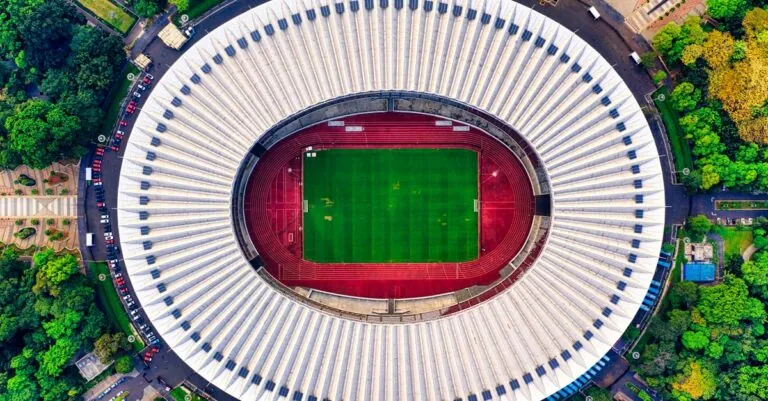Imagine floating in the vastness of space, surrounded by twinkling stars and the distant glow of planets. Sounds dreamy, right? But wait—before you start packing your bags for a cosmic vacation, let’s talk about the unsung heroes of space travel: life support systems. These technological marvels keep astronauts alive and kicking in the harshest environment known to humankind.
From recycling air to managing water and food, life support systems are like the ultimate survival kits—minus the flashy packaging. They ensure that while astronauts explore the final frontier, they don’t have to worry about running out of oxygen or sipping freeze-dried coffee for weeks on end. Buckle up as we dive into the fascinating world of life support systems and discover how they make space travel possible, one breath at a time.
Table of Contents
ToggleOverview of Life Support Systems in Space
Life support systems serve as the backbone of sustained human presence in space. These systems incorporate several critical functions to ensure astronauts’ safety and well-being. Air recycling technologies remove carbon dioxide and replenish oxygen, creating a breathable atmosphere inside spacecraft, while water recovery systems purify wastewater and reclaim moisture from the air.
Water management ranks among the foremost challenges in space missions. Closed-loop systems recycle water from various sources, significantly decreasing the need for resupply missions. Food preparation takes advantage of advanced growing technologies, allowing astronauts to cultivate food in microgravity conditions.
Monitoring health holds paramount importance for life support systems. Physiological sensors track vital signs and detect any abnormalities, providing crucial information to ground control. Temperature control systems maintain comfortable living conditions aboard spacecraft.
Spacecraft like the International Space Station (ISS) demonstrate these systems in action. The ISS incorporates numerous life support technologies that have evolved over decades, showcasing their effectiveness during long-duration missions. Future missions to Mars and beyond will rely on even more sophisticated systems to support extended human habitation.
Research and development continue to enhance life support system resilience and efficiency. Innovations in bioregenerative life support could further improve sustainability, making human exploration of distant planets increasingly feasible.
Components of Life Support Systems
Life support systems encompass several critical components that work together to maintain astronauts’ survival in space. Each system addresses specific needs essential for human habitation in a hostile environment.
Atmospheric Control
Atmospheric control systems manage air quality in spacecraft. Carbon dioxide removal systems filter out exhaled CO2, preventing toxicity. Oxygen regeneration units produce breathable air by converting chemical reactions into oxygen. Sensors monitor atmospheric conditions, providing real-time data to ensure optimal living conditions. Maintaining proper pressure and ventilation supports both physical health and psychological well-being.
Water Recovery and Management
Water recovery systems play a vital role in conserving water resources. These systems purify wastewater through advanced filtration techniques, making it safe for reuse. Moisture recovery units extract water from the air, utilizing condensation methods to ensure adequate supplies. Continuous monitoring helps manage water levels, keeping them consistent for personal hygiene and hydration. Efficient water management significantly reduces the need for resupply missions.
Waste Management
Waste management systems ensure proper disposal of human waste and other materials. Incineration units safely burn organic waste, minimizing volume and odor. Solid waste is contained for eventual disposal upon return to Earth. Liquid waste management uses treatment processes to sanitize and reclaim resources as needed. Effective waste management contributes to a sustainable environment for long-duration space missions.
Types of Life Support Systems
Life support systems are categorized into two primary types: closed-loop systems and open-loop systems. Each type plays a crucial role in sustaining human life in space.
Closed-Loop Systems
Closed-loop systems recycle resources within a contained environment. These systems continuously filter air and purify water, significantly reducing the need for resupply missions. Oxygen generation occurs through electrolysis, splitting water into hydrogen and oxygen, while carbon dioxide removal systems utilize chemical scrubbers to maintain breathable air. Wastewater treatment involves processes that reclaim moisture using condensation methods. Advanced sensors continuously monitor conditions, ensuring optimal levels of oxygen and humidity. Such systems enhance efficiency, making them ideal for long-duration missions.
Open-Loop Systems
Open-loop systems depend on external sources for resource replenishment. These systems typically utilize supplies delivered from Earth or other spacecraft. Oxygen can be supplied through tanks or generated by chemical means, while water sources may involve ice mining or transport from celestial bodies. Waste management often requires discarding unwanted materials directly into space. Although they provide immediate solutions, open-loop systems present challenges in terms of weight and storage. Astronauts rely on these systems for shorter missions, though their effectiveness decreases for prolonged space habitation.
Challenges in Life Support Systems
Life support systems face several challenges that impact their function and reliability in space missions. These challenges primarily arise from technical limitations and human factors influencing life sustainability.
Technical Challenges
Precision in design remains critical for life support systems. Atmospheric control systems must maintain consistent oxygen levels while effectively removing carbon dioxide. Water recycling technologies often struggle with efficiency, especially in purifying wastewater and extracting moisture from the air. Maintenance of these systems poses significant challenges; any malfunction can lead to abrupt resource shortages. Reliability is paramount, as the isolation inherent in space travel magnifies the consequences of technical failures. Additionally, energy requirements for sustaining these systems complicate overall mission planning and resource allocation.
Human Factors
Psychological and physiological factors play a critical role in the success of life support systems. Space travel can create unique stressors and affect crew performance and well-being. Fatigue from long-duration missions impacts decision-making, while social dynamics among crew members also pose challenges. Nutritional needs vary among individuals; a single type of food may not meet all astronauts’ dietary requirements. Sleep patterns can shift due to the absence of natural light cycles, influencing health and productivity. Moreover, reliance on technology requires crew training to ensure effective operation and quick responses to emergencies.
Future Developments in Life Support Systems
Innovations in life support systems continue to evolve as space agencies aim for more sustainable missions. NASA and private companies explore advanced bioregenerative systems designed to create a self-sustaining environment. These systems focus on integrating biological processes, allowing plants and microorganisms to assist in recycling air and water.
Technological advancements also enhance air filtration techniques, improving carbon dioxide removal efficiency. Increased efficiency results in lower energy consumption and reduced reliance on supplies from Earth. Furthermore, researchers investigate new materials capable of better managing moisture, essential for water recovery processes.
Developments in food production technology present another exciting frontier. Hydroponic and aeroponic systems allow astronauts to grow fresh produce in microgravity. These systems not only provide nutritious food but also contribute to psychological well-being by offering a connection to Earth.
Research in artificial intelligence plays a significant role in monitoring life support systems’ performance. AI algorithms analyze data from sensors, optimizing conditions for human health. Predictive maintenance strategies can identify potential failures before they occur, ensuring continuous operation during missions.
Collaboration among international space agencies also enhances life support systems. Sharing knowledge and resources accelerates the development of new technologies. Efforts focus on adapting systems for use on Mars, addressing the unique challenges of its atmosphere and environment.
Sustainable practices remain a priority for future developments. Closed-loop systems will gain further attention due to their minimal resource requirements. Innovations in waste management processes enhance overall sustainability, reducing the environmental footprint of missions.
Continuous research and collaboration drive these advancements, paving the way for longer missions with more complex life support systems essential for human presence in space.
Conclusion
Life support systems are vital for the success of human space exploration. They not only ensure astronauts’ survival but also enhance their ability to conduct research and exploration missions. As technology advances these systems will continue to evolve, making long-duration space travel more feasible.
Innovations in bioregenerative life support and advanced resource recycling will play a key role in future missions to Mars and beyond. The collaboration between space agencies and private companies will drive the development of more efficient and sustainable systems. Ultimately, the continued improvement of life support technologies is essential for humanity’s journey into the cosmos.








